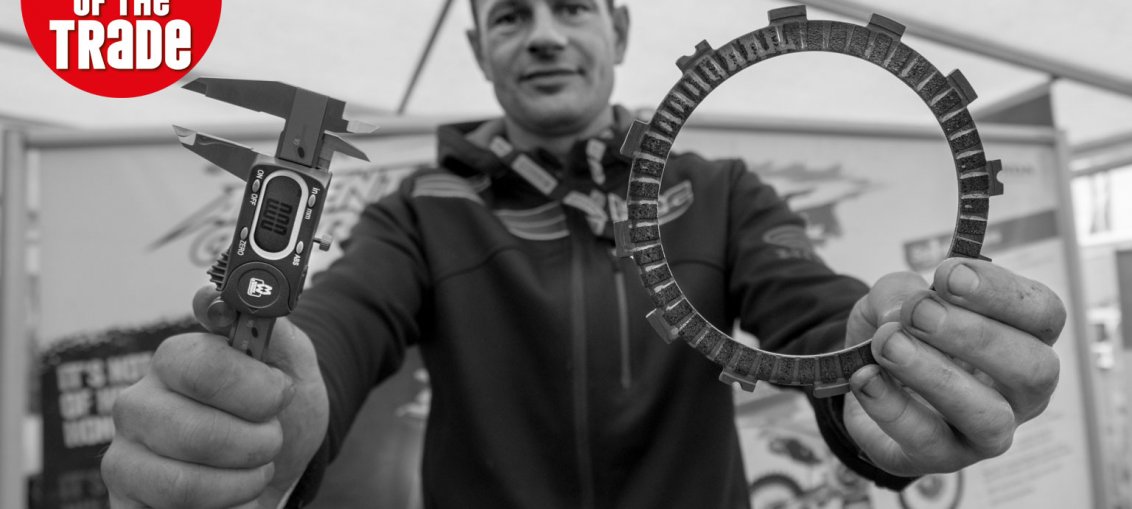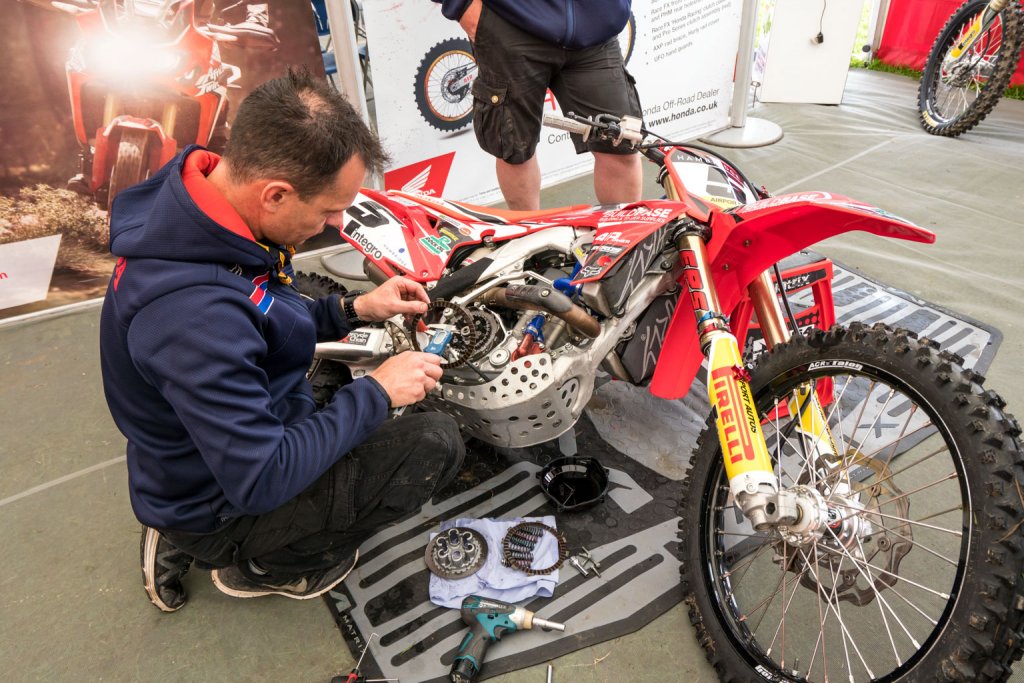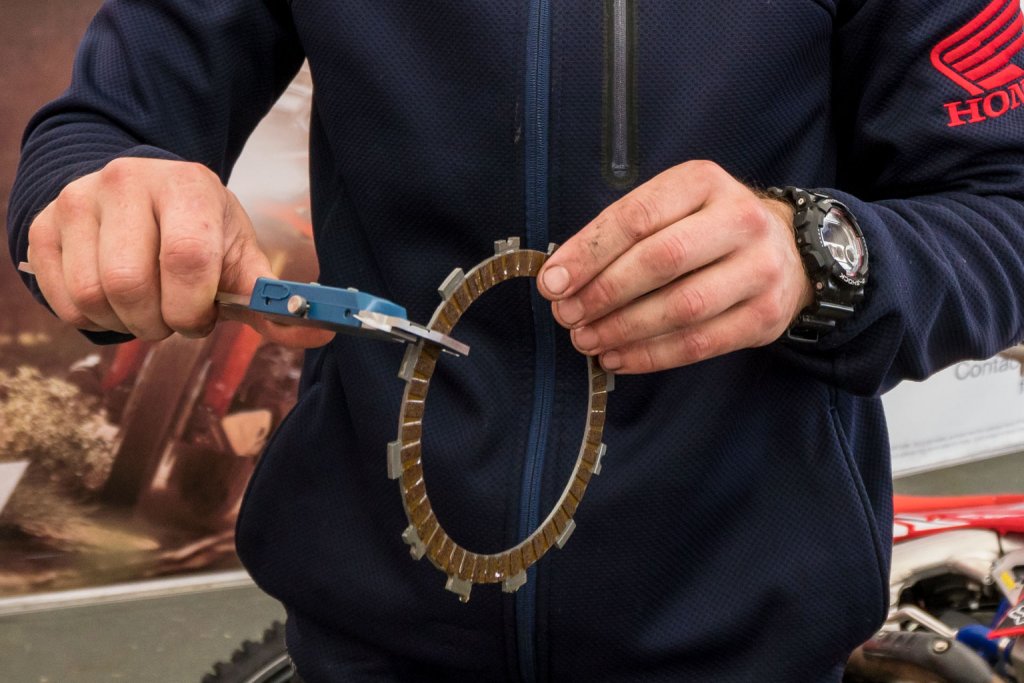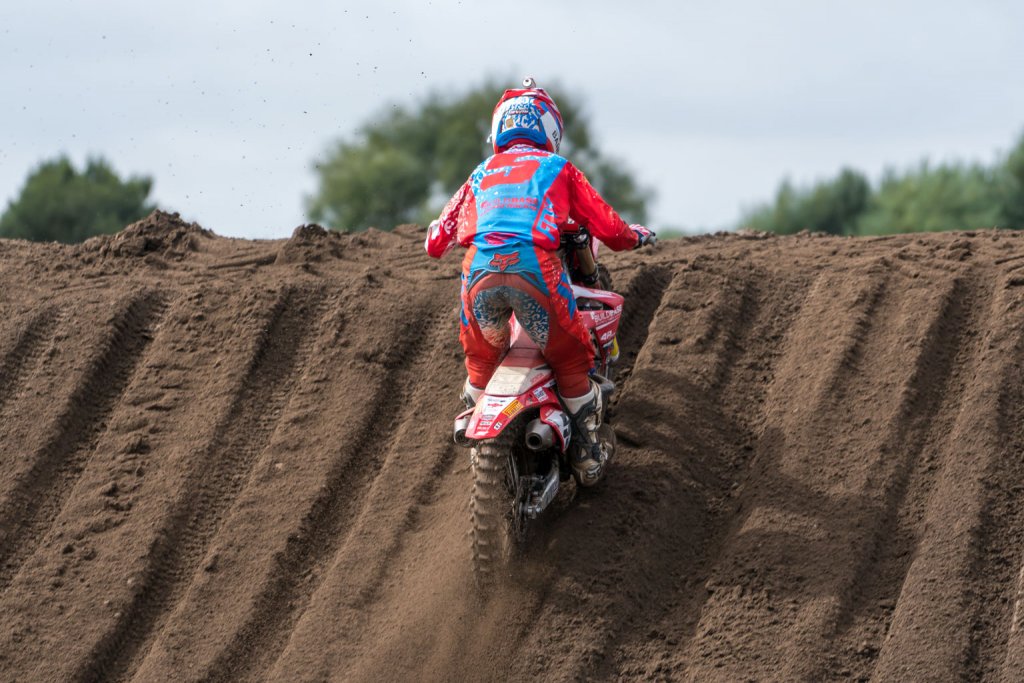
RACE DAY CLUTCH TWEAKS!
Honda’s Rob Boseley reveals his daily regime for clutch maintenance
Go to any top-level race and you’ll often see a bike on its side between motos with the clutch cover off and a mechanic with clutch plates in his hand, frantically checking to make sure everything is good for the next race. It’s something every racer should do to keep their bike in top
Put the left side bar onto the top of a paddock stand by carefully leaning the bike all the way over. This means the engine oil drains to the side of the engine rather than spilling out. Then just whip off the clutch cover and remove the bolts holding the springs, so you can pull the fibre and metal clutch springs out.

Rob Boseley is race mechanic for Buildbase Honda rider Graeme Irwin and says: “We always start every race day with a complete new set of friction plates in. Then after practice and each moto I take the plates out and use a micrometer to make sure they are the right thickness. There’s a tolerance listed in the handbook.
“It’s pointless to put new clutch plates in automatically as you’ll be throwing away perfectly good clutch plates. Some bigger teams do, though. Some people tend to say if one plate is worn, ditch all of them. But 90 percent of the time, they’re not all worn. For example in today’s race day I put a couple of plates to replace the worn ones. The tolerance is there for a reason and as long as they are in, they stay or else it’s like throwing out new.

“I don’t really check the steels too closely. They can warp but they don’t get thinner. Just out of shape. The baskets can get grooved through. But it depends how hard the rider is on the clutch and there can be a big difference between riders as to how long they can last.
“Irwin can be heavy on the clutch, depending on the track and the conditions. Like in heavy going sand, there is a lot more pressure on the clutch.
“We run totally standard clutches. A standard basket and we’ve had no clutch problems all year. We don’t run hydraulic clutches – that’s a banned word in our team! They’re not too good. A proper hydraulic clutch to a slave cylinder – like a KTM – is good, but the hydraulic clutch that ends in a plunger with a cable to an actuator arm isn’t too good, we think. We’re happy with standard Honda.”

Original content from MotoHead Issue 1 – November 2016
